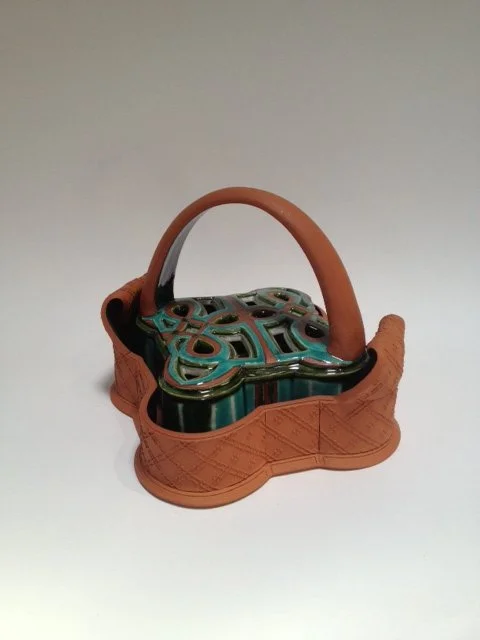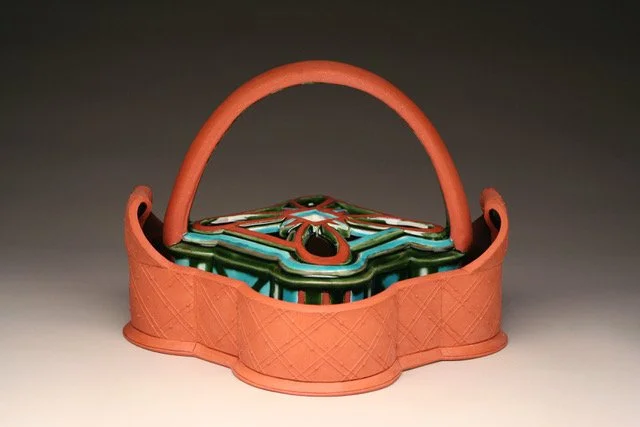Katrina Chaytor
Newfoundland
Growing up in the province of Newfoundland and Labrador, Katrina’s creativity was nurtured by her beloved grandmother, who sustained a livelihood with quilt-making, knitting and rug hooking, and Katrina’s mother, who encouraged her inclination to make things. A tour through Memorial University Extension Services (St. John’s), resulted in after-school pottery lessons, thus igniting a life-long passion and dedicated profession in Ceramics.
Katrina is now a Professor Emeritus, having retired (June 2017) from the Ceramics Program at the Alberta University for the Arts (now the Alberta College of Art + Design.) Her final project before retirement was co-coordinator with Julia Krueger in the publication of Relational Learning: ACAD Ceramics Visiting Artists— The First 3 Decades, (Illingworth Kerr Gallery, ACAD 2017).
Katrina received a BFA from NSCAD University and an MFA from the New York State College of Ceramics at Alfred University. Following opportunities to teach at colleges and universities across Canada, it was in 2001 that Katrina became a permanent faculty in the Ceramics Program at ACAD. Alongside teaching, Katrina maintained an active studio practice, workshop presentations and exhibition record. Her history of residencies and research opportunities have afforded her rich and rewarding work experiences in Mexico, mainland Greece and Crete, United States, China and research travel through Italy, France and England. Katrina has relocated back to her home province to the town of Renews, and it is here she continues her studio practice.
As for her studio work, Katrina states: It is a pot’s inherent potency to enhance daily life; a simultaneous engagement of concept (utility), action, service and aesthetic experience that I find both deeply compelling and challenging. Decoration is also integral to my research and pottery practice in its capacity to be both performative - delighting the eye and informative - as a cultural carrier of meaning. I am interested in how decoration has served this dual purpose in cultures and histories. Decoration constitutes complex, diverse and visually rich languages that reveal a society’s values, traditions and cultural structures.
Binary Code Fruit Bowl,2022 $450 9.5x3.5'
Binary Code Fruit Bowl,2022 $450 9x3.5'
Fruit Bowl $450
Fruit Bowl $450
Fruit Bowl $450
#1 Flower holder with Tray ,2011 $450 earthenware with coloured glazes
#2 Flower holder with Tray ,2011 $450 earthenware with coloured glazes
#6 Basket, 2011 $275 earthenware with coloured glazes
#5 Flower holder with Tray ,2011 $475 earthenware with coloured glazes
Flower PIllow, 2010 $325











